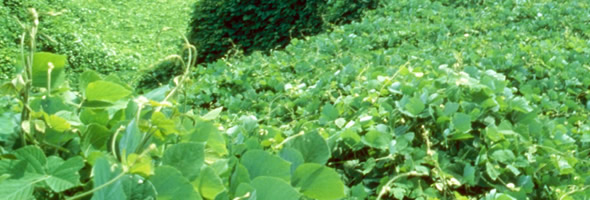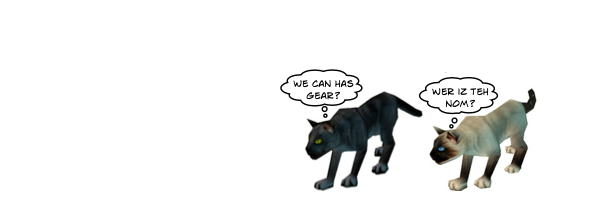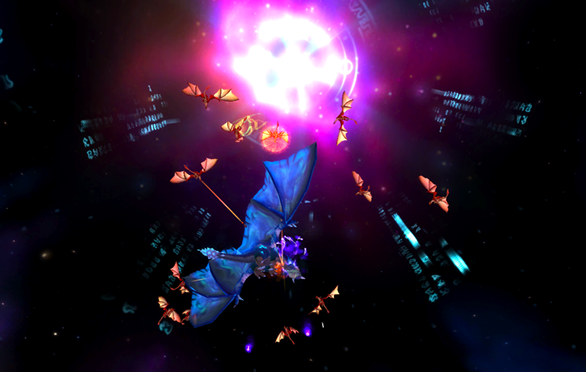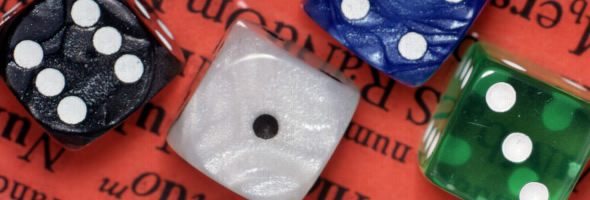
Those of you who keep up with upcoming patch notes and blue posts on the official WoW forums have probably known for quite some time–ever since before Wrath’s release in fact–that both Wild Growth and Circle of Healing were living in the shadow of the nerf bat. A 6-second cooldown has been threatened for both spells since beta testing proved their strength.
Now that the nerf has gone to PTRs, a new wave of complaints has swept over most healing websites. If the comments on Matticus’s recent WoWInsider article are any indication, the nerf to AoE insta-heals draws a passionate response from almost all players, whether they belong to one of the affected classes or not. In fact, what surprises me about the whole discussion is the sheer number of vehement, “L2P nub, don’t spam AoE heals” type retorts. A lot of discipline priests, in particular, seem to feel vindicated by the nerf. On the other side are those that passionately argue against nerfs to any class. I sympathize with this point–such an adjustment to two classes makes us all weaker. When there are less available tools in the toolkit, the game becomes both more difficult and less fun to play.
That said, I find myself having very little personal reaction at this point. Perhaps that’s because I’ve known that Wild Growth spam isn’t a long-term tactic for months now? This is not to say that I’m in support of putting in a 6 second cooldown on Wild Growth and Circle of Healing, just that by now I’ve become accustomed to the idea.
From a certain perspective, this nerf seems necessary. The following series of musings is my attempt to take what I’ve observed through Naxx 10 and 25, Sartharion 10 and 25, and Malygos 25 and try to explain why, from the developers’ perspective, it’s druids’ and priests’ turn to cry.
The State of Healing in Wrath
1. Right now, the risk of dps death during raids is minimal. Healing is relatively strong overall, and three out of the four healing classes have capable raid-healing tools.
2. Right now, the risk of tank death during raids is minimal. Healers can keep up with incoming damage, and tank healers often have time to cast spells on other targets.
3. Most encounters are designed with at least some AoE damage. This kind of damage will always be at least a little challenging for healers because they have to deal with the Interface Boss in order to get heals on multiple targets. However, there is no new Gurtogg Bloodboil yet–AoE damage has not been taken to the kind of extremes we saw in BC.
4. Wrath encounters typically require less healers than BC bosses did. For most guilds, I would take the number that they ran with in BC and subtract one to get their perfect number of healers for a 25-person raid.
5. Smart heals like Chain Heal, Circle of Healing, and Wild Growth are really, really effective. It turns out that (surprise, surprise) a computer is better than a human being at calculating who needs a heal.
6. Mana management is less challenging than most bloggers–including me–thought it would be. It turns out that the level 80 epic gear does a pretty good job of getting people the regen they need, even though some of the old familiar tools (mana oil and chain-potting) are history.
The Behavior of Healers in the Wrath environment
Intelligent players respond to the conditions given them, and the top WoW players will always use a play style that the numbers support. Now, there may be individual differences and preferences, but given free choice, almost all players of the same class and spec will, at the top end of the ability spectrum, make the same decisions. Here’s how raiders are reacting to our current capabilities and to the demands of the current content.
1. Healers are using Wild Growth and Circle of Healing to the utmost. And why not? These two heals do, in fact, make the content much easier. If AoE damage is the challenge (and Blizzard seems determined that it should be), these two spells are the antidote of the moment.
2. Healing has become a competition between healers instead of a mad race to keep people alive. No one is going to die anyway–the content is too easy for that. The best healers are trying to sneak in effective heals against their fellows. Spells like Wild Growth, Circle of Healing, and even the high-HPS glyphed Healing Touch shine in an atmosphere of heavy competition.
3. Healers are not focusing on mana efficiency. When the content is easy and the team can kill a boss quickly, mana efficiency is less relevant. There are no prizes awarded for ending an encounter with 40% mana. The only prize available is for healing output. As such, many players end up healing too much too early and needing someone else’s innervate. This has happened to me a few times, and I’ve been trying to watch it.
4. Druids and priests are, in fact, leaving paladins and shamans behind on the meters. This has only one good effect–that shamans aren’t as necessary any more. I’ve recruited for two different guilds, and the hardest position to hire is that of alliance resto shaman. There just aren’t many out there.
What the Developers Hope the Nerf Will Accomplish
Here is where I really get speculative. The following is my best guess about exactly what kind of “fix” the new 6-second cooldown will be.
1. The nerf will retroactively add difficulty to encounters that guilds have already cleared. Some guilds may even find themselves unable to beat a “farm status” boss. As a result, guilds may stay in the current tier of content longer than they otherwise would. This is good for developers, because it stresses them less to release the next tier in a timely manner.
2. The healing meters will shake out a little differently. The conspiracy-loving part of my brain thinks that it’s “best” for Blizzard if people go back to complaining about resto shamans. After all, they’re far less numerous than priests and druids, at least on alliance side. While most guilds could fill their entire healing roster with priests and druids, I doubt anyone could fill theirs entirely with shamans. It’s a safer class to have at the top of the chart.
3. The management of another cooldown will add back some of the difficulty of playing a druid or priest. The developers want playing a healer to be difficult. If healing is difficult, a guild takes longer to go through a tier of content. For example, let’s take the healing druid. In the good old days of managing 7 second Lifebloom stacks on multiple targets, timing used to be everything. With stacking de-incentivized, I often have only one 9 second triple stack to manage, giving me a lot of freedom. I have a feeling though that now I will be casting Wild Growth every time it’s up. There will be a bit of a return to a fixed spell rotation. I hear many healers threatening to give up their AoE spells entirely, maybe even going as far to spec out of them. I tend to agree with Matticus in thinking that, paradoxically, Circle of Healing and Wild Growth will become more important. We’ll need to actively manage those cooldowns, and the effect of that adjustment period will be to slow progress down.
4. There might be room for an extra healer in a healing team. Circle of Healing and Wild Growth have been such workhorses that the old numbers for a healthy healing squad didn’t make sense any more. This might give a few out of work raid healers something to do. It’s not good for Blizzard if lots of players lose their raid spots.
Am I in Favor of the Nerf?
Personally, no I’m not. And yet, I’m not up in arms about it either. I realize that it hits druids less hard than priests, but I’m not worried about either class’s raid spots. Wild Growth and Circle of Healing are still good spells. Comparatively, I’d say that the Lifebloom nerf of a few months ago was much more devastating than this one.
The addition of a 6 sec cooldown to my best-designed spell is not a happy prospect, and it’s not the kind of thing that makes healing “more fun.” In fact, managing an extra cooldown, especially for druids, who are already managing Lifebloom and Swiftmend, is pretty much anti-fun. I’ve never believed developers’ claims that they want to make healing “more fun.” I don’t think that’s really in their advantage–to really make healing more fun would probably “trivialize” the content as well, forcing them to come out with more content patches on an accelerated timeline. What they might actually do is change our interface to be more “interactive”–and also a ton more difficult to use. I dread this prospect a lot more than any nerf to Wild Growth! Think about the new vehicle interfaces and imagine if you had to heal and target with that! What if all healing were like Malygos Phase 3 or the final boss of the Oculus? As it is, I think the developers recognize that healing, more so than tanking or dps, requires players to modify their interface. I hope they just leave us alone with that and let Grid do what their standard frames can or will not.






